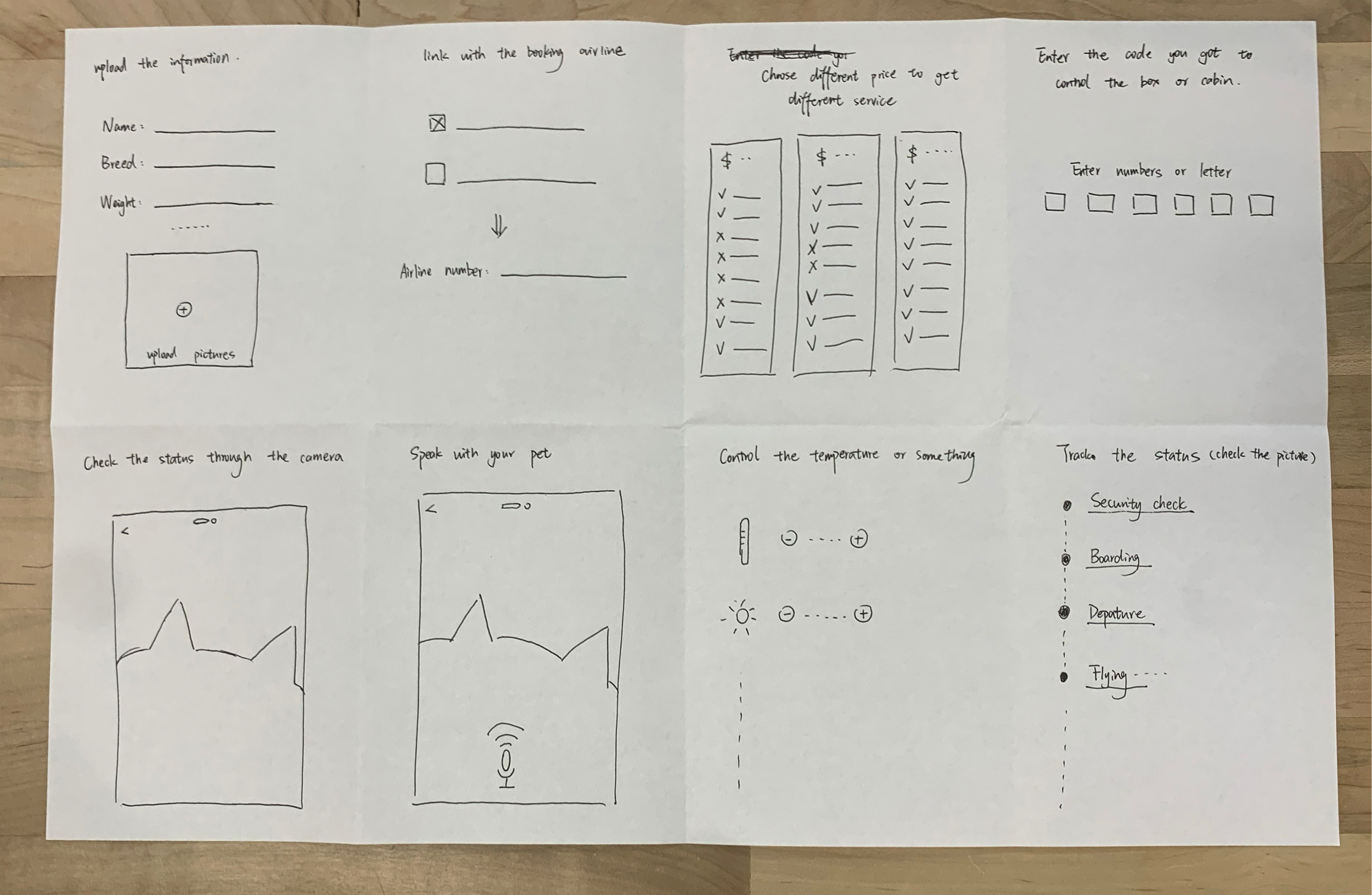Project Overview
Waggo is a product that allows pet parents to monitor their furry friends, maintain constant communication with them, and ensure their safety while flying. By creating a one time Pawsport, you can have all your pet's information available at your fingertips. A boarding pass is then generated for your pet, that you can use to check them in upon arrival at the airport.
Once checked in, you can check on their status via the Live Tracking feature, which provides you with constant updates until they have been safely boarded. Once aboard, you can monitor them live (via a pet-camera mounted to the kennel), control the lighting and fan settings, and even toss them their favorite treats!
After landing, you will get updates on their status, and a map to reunite you with your furry friend! At your destination, Waggo will provide offers and suggestions on activities to take part in with your pets! No more leaving family behind, cause pets are family, not luggage.
Project Details
Role: Team Lead
Timeline: 10 weeks
Tools: Figma, Miro, Whimsical, Adobe CC
Team: Rohan Adhav, Ryan Spears, Serena Xu, Zheyuan Chen
1 Gold, 4 Silver, 4 Bronze
The Problem
Pets are the new kids, and Americans have more pets than ever before. Air travel and pets, however, are not compatible.
The Alternative
The cost of traveling with a pet is comparable to that of boarding them for 10 days. While traveling under current circumstances however, pets could be hurt, mishandled, or even die.
How Might We…
ensure a safe and secure environment for pets that reassures pet owners during the air travel experience through coordinated communication and comfortable accommodations?
Generative Research
We began our generative research phase by creating an empathy map, with the goal of understanding the needs and wants of the different stakeholders. We then proceeded to map out the journey of our primary stakeholders; pet owners and their furry companions.
We then employed tools such as the business model canvas to understand the relationship between major stakeholders, resources and activities. This exercise also helped us understand viability of the platform and provenance of revenue streams.
Quick Prototyping
During our prototyping phase, we conducted quickly iteration exercises to understand critical points in the user journey.
We discovered some key necessary features:
Smooth, one-time onboarding
Constant updates
Easy communication channels
Live Tracking
Mid-Fidelity Prototype
We analyzed our early iterations and prioritized features based on user feedback. This helped us create a mid-fidelity prototype. This prototype helped us wireframe the overall look of the screens.
UX Concept Research
We conducted 5 interviews, as well as a focus group to get first-hand reactions from potential users.
Here are our key findings:
Key Features
One Time Pawsport
Create a one time Pawsport for your pet that holds all their information, and can be used for future travel.
Real Time Tracking and Chat
Track your pet in real time as they go through the airport. Get live updates from the handler on your pet’s status. Coordinate pick-up once landed.
Live Interactive View
Interact with your pet in real time once they have boarded. Talk to them, control fan speed, and even toss them treats!
Final UX/UI
The user journey is divided into three major steps; the onboarding and creation of the Pawsport, the pre-departure check-in process, and the post check-in live monitoring
1
Create your pet’s Pawsport, complete with their vaccine history and even likes and dislikes. Once complete, you are ready to check them in.
2
Check-In
Check your pet in using the QR code generated by Waggo. Also, edit their trip details, and even add extra passengers.
3
Live Monitoring
Once your pet is checked in, get live updates via the tracking feature, and chat with your pets’ handler in real time. After boarding, check on your pet using the live view feature.
Pawsport

Brand Identity
We created a series of advertisements to bring the brand to life. This helped us understand the true purpose of potential users, and reflect the customer’s identity in our service.




















